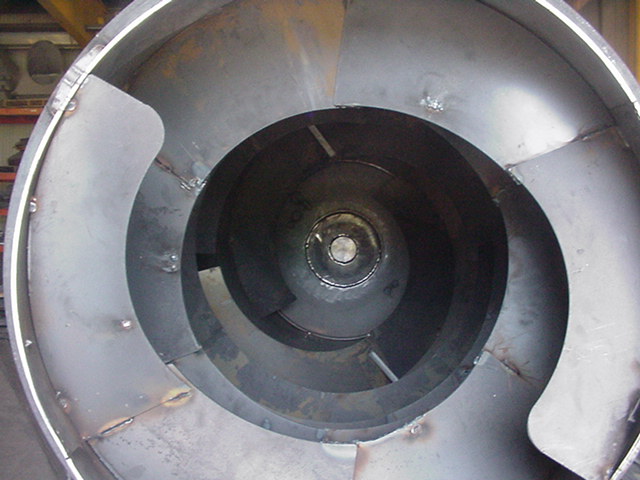
the confounding world of concrete…just add astm c94 to the mix
We get a good amount of communications every month from architects, engineers, contractors, building officials, special inspectors and others about some part of ASTM C 94 that is confusing to them. Just so you know, ASTM C 94 is the “Standard Specification for Ready-Mixed Concrete” and ASTM C 94 is listed as a reference standard in ACI 318 (Concrete Code) and ACI 301 (Specification for Structural Concrete).
Let’s start this conversation with a clear understanding of the role of the three documents discussed in this article (ACI 318, ACI 301 and ASTM C 94).
ACI 318 is the “Building Code Requirements of Structural Concrete” and while ACI 318 lists ASTM C 94 as a reference document, it does NOT list ACI 301 as a reference document. It does list article 4.2.3 of ACI 301 as a reference standard; ACI 318 stipulates that concrete mix proportions be established in accordance with article 4.2.3 of ACI 301 but ACI 318 DOES NOT list ACI 301 (in its entirety) as a reference standard – it only lists article 4.2.3. How’s that for clearing things up?
ACI 301 is the “Specifications for Structural Concrete” and is not considered CODE except for article 4.2.3 as mentioned in the previous paragraph. ACI 301 is listed as a reference standard in every set of contract documents in the land and because of this, the requirements of ACI 301 are just as enforceable during project construction as the CODE. As we struggle to understand the different roles of these three documents, remember that ACI 301 language becomes the project specifications which are “the written description of the project just as the drawings are the graphic depiction of the project”.
ASTM C 94 is known as the “Standard Specification for Ready-Mixed Concrete” and covers ONLY “ready-mixed concrete”. At the risk of being redundant (and possibly pedantic), ASTM C 94 is listed as a reference standard by the concrete CODE (ACI 318) and all portions of ASTM C 94 are considered a part of ACI 318 and enforceable as CODE unless noted otherwise within ASTM C 94 or ACI 318. For instance, the numerous notes and footnotes listed within ASTM C 94 are not considered a part of the ASTM C 94 standard unless they are a part of tables and figures listed within ASTM C 94. This “footnote” discussion is important because ASTM C 94 has lots of them (about two dozen) and while the footnotes relate pertinent information to the reader, we must always remember that the footnotes are there only to enhance our understanding of the C 94 material and are not binding or enforceable.

Now that we know the general role of these three documents (ASTM C 94, ACI 301 an ACI 318), what about ASTM C 94 and what is its purpose? ASTM C 94 is the specification almost universally used in the United States for concrete manufactured and delivered to the job site in a freshly mixed and unhardened state. For almost any job, C 94 addresses the separate and joint responsibilities of the various parties that comprise the project team and includes the contractor, concrete supplier, testing and inspection agency, specifier and even the owner. Here are just a few of the more important items addressed in C 94:
- Text to clarify the relationship between the manufacturer (concrete producer) and the purchaser (whomever buys the concrete). Several options are explored that govern the purchase of the concrete and the material proportions of the concrete
- Text addressing tolerances in concrete slump and air content
- Text addressing material tolerances (cement, sand, stone, water, admixtures)
- Text addressing the batch plant equipment and different types of ready-mix trucks, mixing drum revolutions, etc.
- Text addressing the items that must be listed on the concrete delivery ticket
- Text addressing the addition of mix water at the job site and when the job-site added mix water can be added
- Text addressing the sampling and testing of fresh concrete including when and where the quality control sample of fresh concrete must be obtained
- Text addressing the practices, test methods and reports that deal with the testing of the fresh concrete including the specific test methods that must be used in the field
- Text addressing the rules and guidelines that deal with the acceptance or rejection of the concrete based on laboratory and field data
Item 4 limits the maximum number of revolutions of the truck mixing drum to 300 revolutions. This means that all of the concrete in the ready-mixed truck must be discharged prior to the mixing drum attaining 300 revolutions.
Item 5 lists about 25+ details that must be printed (or written) on the concrete delivery ticket that accompanies the ready-mixed truck when it arrives at the job site. While all of these details are not absolutely necessary to determine that the concrete complies with the CODE and the contract documents, many of the C 94 required items ARE required to be on the concrete ticket so that code compliance can be determined. All sources of added water MUST be listed on the concrete ticket such as free water in the stone and sand as well as all other sources of water. This is essential so that the maximum water-cement ratio will not be compromised.
Item 6 addresses when the addition of mix water can be done at the job site as well as where (during concrete discharge process) that mix water can be added and cannot be added. Basically, mix water cannot be added to the ready-mixed concrete truck after the concrete off-loading process has begun. This mix water addition rule does NOT apply to concrete samples taken at the REAR of the concrete load to perform slump and air tests.
Item 7 addresses when and where the quality control (QC) sample of ready-mixed concrete must be obtained from the concrete ready-mix truck. It has to be taken from the truck (and NOT the pump discharge hose) and it must be obtained AFTER 10% of the concrete has been discharged and BEFORE 90% of the batch is discharged.
I have listed thumbnail descriptions of these four items (item #4, item #5, item #6 and item #7) because these in particular are so often misunderstood.

On the drum revolution criteria (item #4), C 94 requires that the truck mixing drum experience 70 to 100 revolutions after all materials are in the drum. C 94 also requires that the truck mixing drum be turned an additional 30 revolutions after water is added at the job site. This 30 additional turns of the drum (concrete) after adding job site water is a highly DUBIOUS number of revolutions. Most sane people (people like you, dear Readers) will agree that 30 revolutions of the mixing drum at the job site after the addition of mix water at the job site is NOT ENOUGH to move the mix water ADDED at the REAR of the TRUCK mixer to the front of the load of concrete if the concrete drum is loaded anywhere near maximum capacity (6 to 10 cubic yards).
You might be thinking to yourself…. So what? Well, here’s what. If you only treat one-half (or less) of the ready-mixed concrete in the mixing drum with the added mix water, the remainder of the concrete
will be too dry (too low of a slump) PLUS C 94 stipulates that you to turn the mixing drum ENOUGH to ensure a HOMOGENEOUS mixture (the entire load having the same slump). A big job site issue when it comes to adding (allowable) water is not achieving enough drum revolutions to move all of the added mix water throughout the entire load of concrete. REMEMBER too, that you cannot add any more water to the load of concrete after discharging an appreciable amount of concrete. If you wonder why you cannot ADD additional mix water after off-loading concrete, it is because ASTM C 94 does not allow it.
Now would be a good time to take a break and engage in some physical activity such as poking out ones eyeballs or banging head repeatedly on desk. We’ll wait.
While the “written” narrative that comprises ASTM C 94 may not always be crystal clear upon the first reading (your Editor laughed out loud typing that), it is generally less ambiguous than most building code verbiage that you will find in other code documents. In fact, the language that WAS in the old concrete building code (ACI 318-11) regarding concrete production and compliance criteria has been replaced in the new building code (ACI 318-14) in Chapter 26 with references to ASTM C 94. Perhaps because this language is easier to understand and is just more appropriate.
There are lots of concrete code compliance criteria set forth in ASTM C 94 and certainly there is much more listed than we can properly cover in this one article (but heaven knows we tried). The criteria that is set forth in ASTM C 94 does include recommended air content for air-entrained concrete for various exposure conditions in Table 1 of ASTM C 94. As you review the recommended air contents listed in Table 1, remember that there is MUCH MORE air content criteria listed in various tables of Chapter 19 of ACI 318-14. The recommended air content data listed in Table 1 of ASTM C 94 does NOT align exactly with the recommended air content criteria set forth in Chapter 19 of ACI 318-14. In this instance and ALL other similar types of instances, ACI 318-14 RULES and you must comply with the CODE (ASTM 318-14) rather than the reference standard (ASTM C 94). Simply stated, the CODE stipulates that when CONFLICTS occur between provisions of the CODE (ACI 318) and reference standard (ASTM C 94), the provisions of the CODE (ACI 318) shall apply.
This rule of CONFLICT between Code language and the reference standard language is pretty much true with ALL codes whether it be the concrete code, the structural steel code or the masonry code, etc. All codes RULE when it comes to differences (conflicts) between the Code and the reference standard; the CODE ALWAYS TAKES PRECEDENCE!
But Wait, We Have a Lot More to Say!
CODE issues got you cracking up? For a complete picture of the Code and how it relates to Special Inspections, F&R would love to provide an AIA accredited Lunch & Learn presentation to the professionals at your firm. A catalog of available presentations can be downloaded here. Contact Alan Tuck for more details at: atuck@fandr.com


